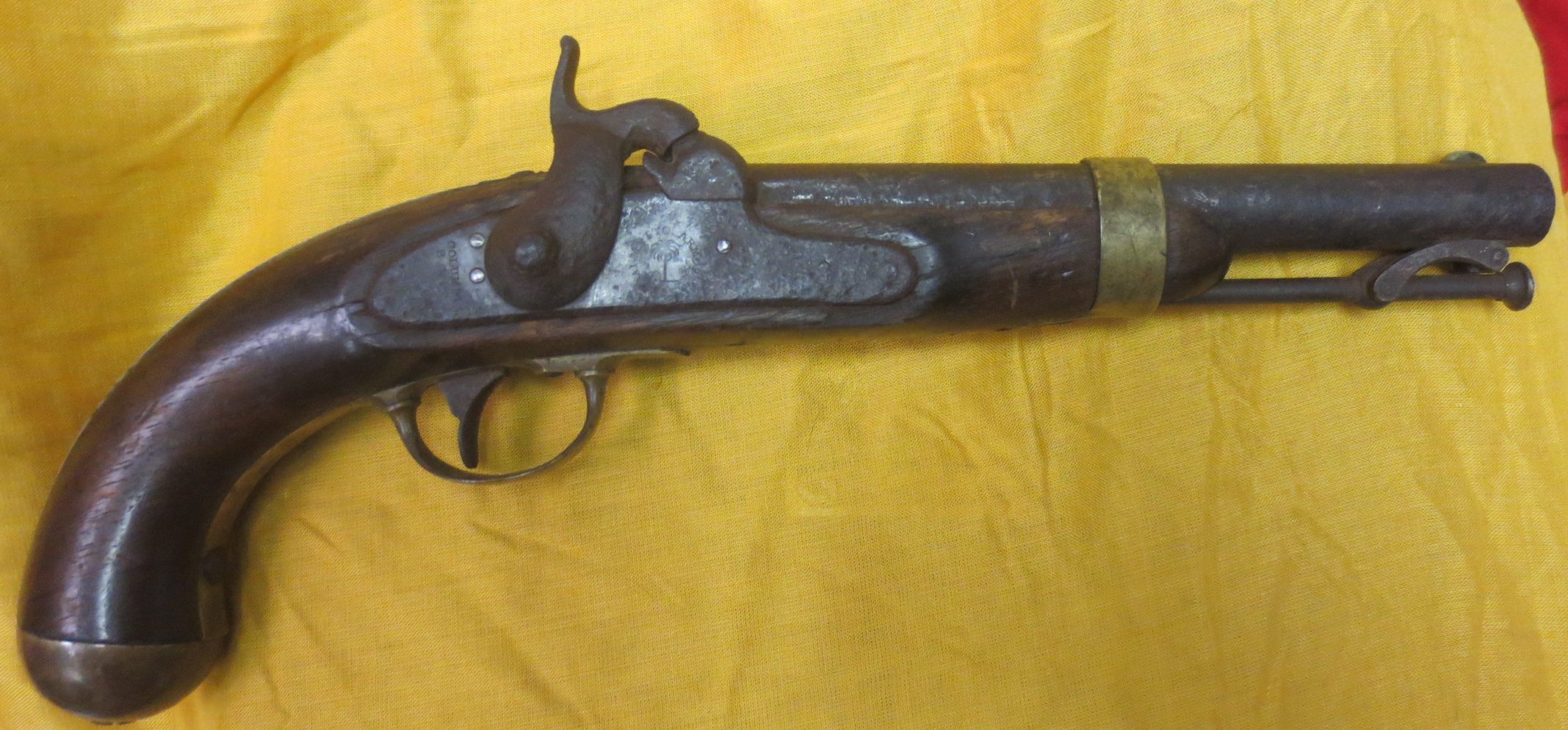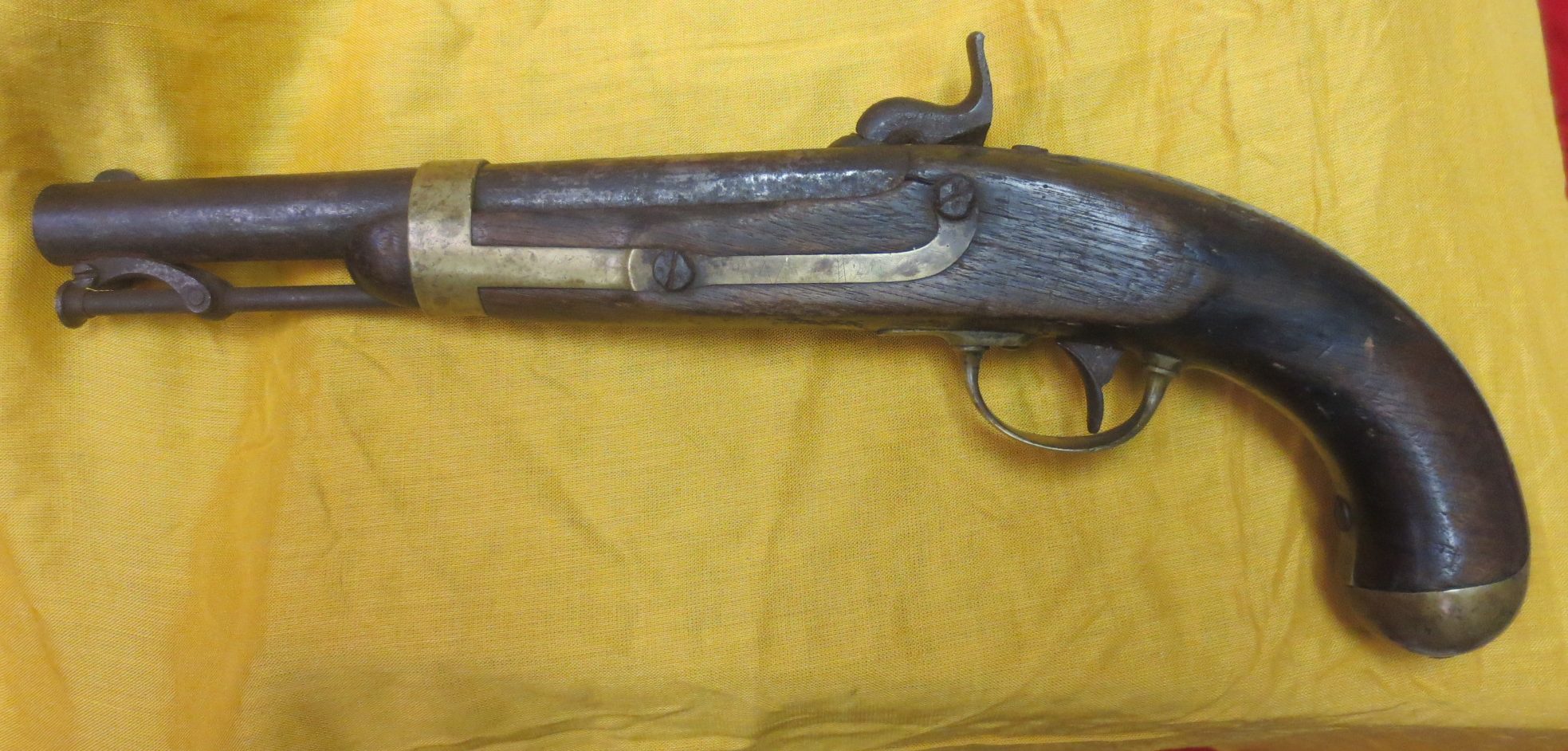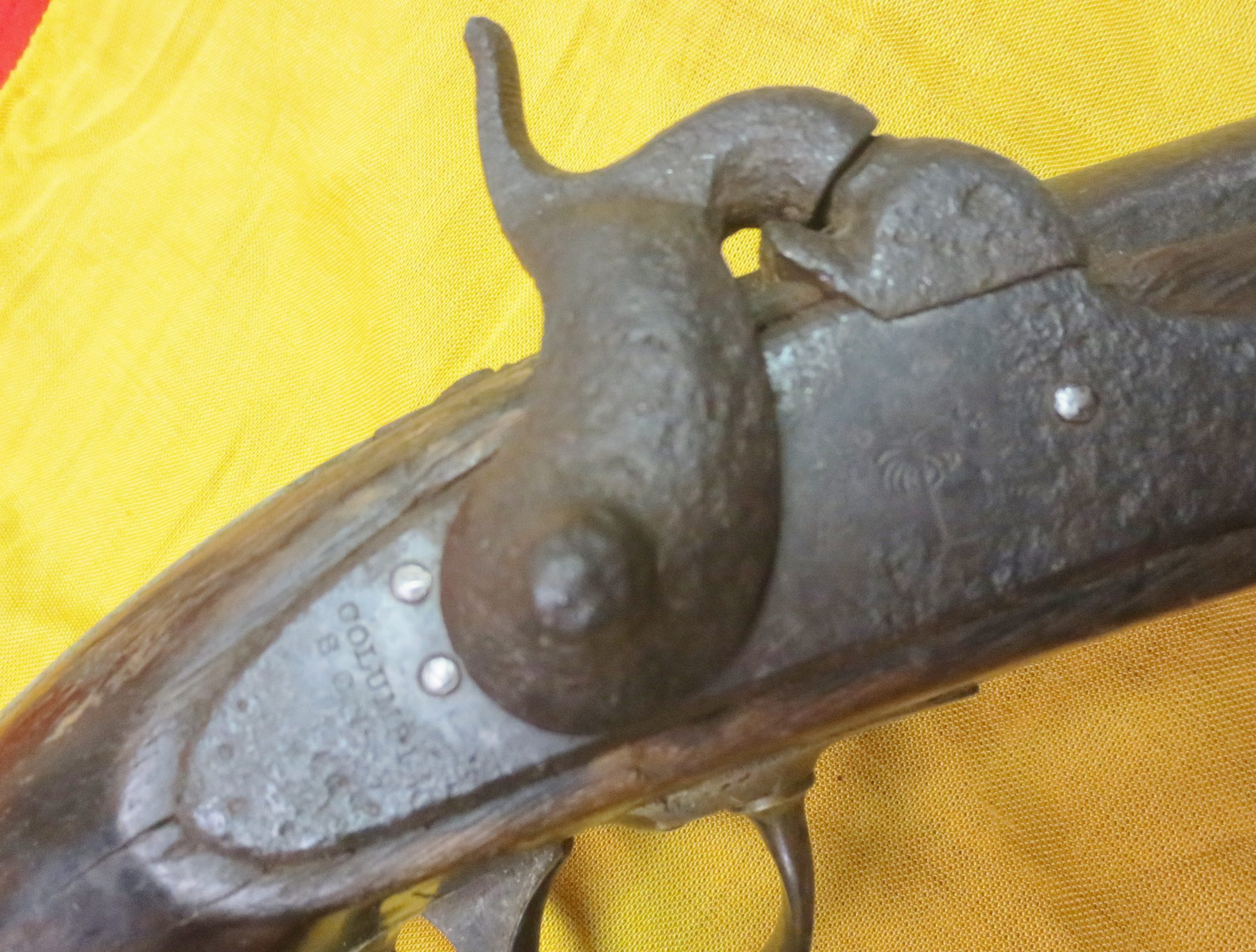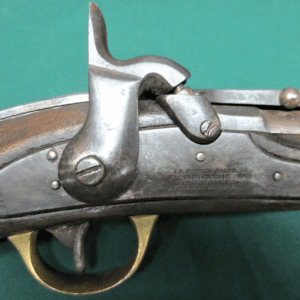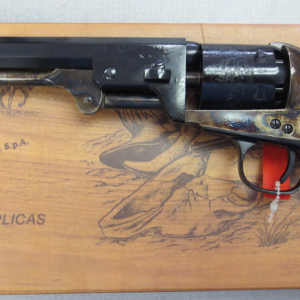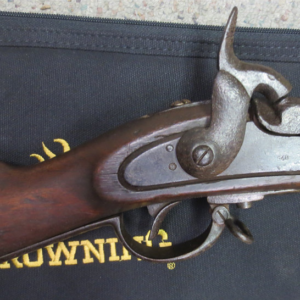Description
One of only 1,000 ever produced, this pistol is a product of William Glaze of Columbia, South Carolina and was, by family history, found on the Fredericksburg, Virginia Battlefield in the late 1860s. It is borderline in relic condition and clearly shows outside exposure for a few years. The left side of the brass escutcheon plate has the scratched in initials of “W.D.V.” which clearly have been there forever. A records search shows only TWO South Carolina soldiers (who may, in fact, be the same guy)–W.D. Vance–serving in the 1st South Carolina Infantry and Company E, 16th South Carolina Infantry. The weapon is functional but the hammer will not hold on full cock, which may be why it was discarded in the field. It has NOT been cleaned–you can clearly see the Palmetto Armory marking and Palm Tree motif on the lockplate as well as Columbia, South Carolina but the barrel proof (Palmetto Tree, VP and W. Glaze) is difficult to make out due to oxidation. If you want an example that is, without question, AUTHENTIC plus with a potential identification to a Confederate soldier and unit, here ya go!
William Glaze of Columbia, SC entered the arms business through the same somewhat circuitous route as several other famous antebellum southern entrepreneurs such as Hyde & Goodrich of New Orleans. Both were dealers in a variety of items from jewelry to fancy goods and also imported items for sale, with little or no arms experience initially. Glaze entered the jewelry business in the late 1830s and by 1848 had partnered with Thomas Radcliffe of Columbia for a joint venture. In 1849, the pair entered into an arrangement to sell arms to the state of South Carolina for the use of the state’s militia. That year the state acquired 100 muskets and 274 rifles from the partners, all of which they simply acquired from northern makers and resold at a profit.
By March of 1851 the partnership between Glaze and Radcliffe dissolved, with Radcliffe returning to his pre-partnership business of general line and fancy good sale sales, while Glaze pursued a new career as an “arms maker”. Glaze partnered with Benjamin Flagg and James Boatwright in the establishment of what would be known to history as the Palmetto Armory but that was originally named the Palmetto Iron Works.
In April of 1851, the new company had a factory and entered into an agreement with the state of South Carolina to provide the following arms: 6,000 percussion muskets, 2,000 percussion pistols (1,000 pairs) and 1,000 each of rifles, dragoon and artillery sabers. The contract specified that the arms were to be delivered during the calendar year 1852 and were to be of the current US patterns then in use; in others words the arms were to be US M1842 pattern muskets, US M1842 pattern pistols, US M1841 pattern rifles and US M1840 cavalry and light artillery sabers. However, the most important contract requirement was that: “These arms and their component parts, to be manufactured within the State of South Carolina, of the best material and workmanship and as far as practicable, of material and by mechanics obtained in the state foresaid.” It is clear from that contractual clause that the State of South Carolina was trying to establish a Virginia Manufactory type facility and wanted to be completely independent of any reliance upon the industrial north for the manufacture of the arms.
It appears that even though Glaze built a factory and acquired some machinery, he never intended to actually fabricate arms in the facility. Rather he intended, at the most, to acquire finished components and assemble them into complete arms. As noted by author Lew Southard in his excellent article The Origin of the Palmetto Pistols (American Society of Arms Collectors Bulletin 81:29-42) the “economy of scale” clearly indicated that Glaze had no intention to manufacture complete arms. The very cost of tooling to manufacture muskets, rifles, pistols and two patterns of sabers would have been so enormous that only large contracts, at least in excess of 10,000 units of each item, would have justified such a capital outlay. Glaze’s contract for 2,000 pistols, to be delivered within a year, was only possible if he were to rely upon a source of completed parts, if not completed pistols. It appears that Ira Johnson was the source for the components and that the locks were assembled by Waters with all parts subsequently sent to Glaze for final assembly. Further investigation of extant, authentic Palmetto Armory pistols reveals that many of the parts used are condemned parts left over from the Federal contract M1842 pistols, marked with the condemnation “C”, which is sometimes partially or nearly completely obliterated.
The inherent delays in the acquisition of the parts and final assembly of the pistols resulted in Glaze failing to meet his contractual goal of delivery in 1852. This resulted in the cancellation of the contract in May of 1853. However, via cajoling and in some cases outright lying, Glaze managed to convince the state that 1,000 of the guns were mostly ready for delivery and Glaze managed to salvage part of the pistol contract. In the end, he managed to deliver 1,000 M1842 pattern pistols by the end of 1853.
The Palmetto Armory Pistol was, for all practical purposes, a US M1842 Pistol. The guns were brass mounted, singles shot, percussion smoothbore pistols with 8″ barrels of .54 caliber and were equipped with a swivel ramrod. The locks were possibly assembled by Asa Waters, and it seems likely that Waters applied the Palmetto lock markings as well, as those markings would have to be stamped before the lock plates were casehardened. It is not uncommon to find some, or nearly all of the parts, marked with a condemnation “C” or some other mark (such as a punch dot) suggesting the parts had not been passed for Federal contract use. Additionally, the components bear no US sub-inspection marks as do Aston and Johnson produced pistols of the same era. Unlike the US contract M1842 pistols, which were delivered with bright barrels, the Palmetto pistols were delivered with browned barrels. This may have been an intentional attempt to conceal the flaws or issues with the many second-hand and condemned barrels used. The barrels are typically marked on the left flat with WM GLAZE & CO and with a small “P” proof, a small “V” and a “Palmetto Tree” on the breech where the usual Federal contract larger “V”, “P” and “Eagle Head” marks are found. The rear face of the barrel and the breech plug are typically marked with alphanumeric mating codes, such as “F 4”. The breech plug tangs of the barrels should only be dated “1853”. As noted the locks of the guns are only dated “1852” and are marked in two horizontal lines behind the hammer: COLUMBIA / S C. 1852. Forward of the hammer, the locks are marked with the circular legend: PALMETTO ARMORY S * C, surrounding the South Carolina palmetto tree. The letters “AL” and “ME” in “palmetto” and “AR” in “armory” are typically conjoined by the bottom leading and trailing edges of their serifs, respectively.
This a completely authentic example of a scarce Palmetto Armory Pistol as produced for the state of South Carolina in the years immediately preceding the American Civil War. With only 1,000 pistols manufactured, finding a completely authentic example can be quite difficult. This is really a wonderful super honest example of a scarce and highly desirable secondary Confederate pistol that would be a fantastic addition to any collection of southern arms and represents a great value when compared to the price of any of the Confederate made revolvers. This gun is southern made, from the state that started the American Civil War and who lead the South in secession and is about one-fourth the price of the least expensive of any the Confederate made revolvers! It is still just as “Confederate” as a Griswold & Gunnison or Leech & Rigdon pistol.
